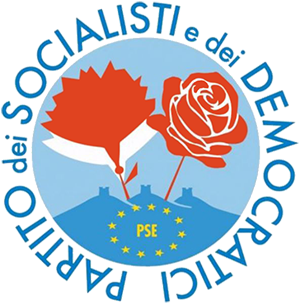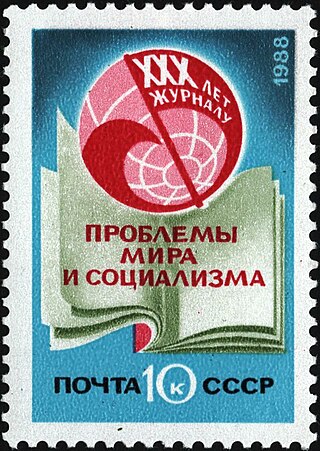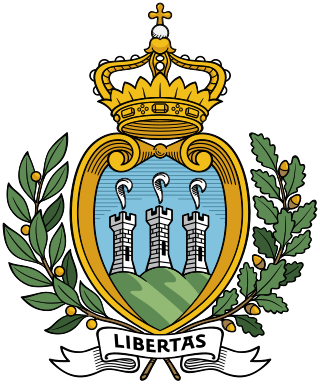As the only surviving medieval commune in the Italian Peninsula, the history of San Marino is intertwined with the medieval, Renaissance and modern-day history of the Italian peninsula, according to tradition beginning with its foundation in 301 AD.

The Sammarinese Christian Democratic Party is a Christian-democratic political party in San Marino.

The Sammarinese Socialist Party was a socialist and, later, social-democratic political party in San Marino. Its Italian counterpart was the Italian Socialist Party and its international affiliation was with the Socialist International.
The Sammarinese Independent Democratic Socialist Party was a social-democratic political party in San Marino. Its Italian counterpart was the Italian Democratic Socialist Party.

The Party of Socialists and Democrats is a social-democratic and democratic socialist political party in San Marino. It is a member of the Socialist International, and observer member of the Party of European Socialists. It is the only Sammarinese party with a reference to the European Union in its official political symbol. Its current-day Italian counterpart is the Democratic Party.
Gianfranco Terenzi was a Sammarinese politician who served as captain regent on four occasions. He was a member of the Sammarinese Christian Democratic Party.

Problems of Peace and Socialism, also commonly known as World Marxist Review (WMR), the name of its English-language edition, was a monthly theoretical journal containing jointly-produced content by Communist and workers' parties from around the world, published from September 1958 to June 1990.
Richard Felix Staar was an American political scientist and historian. He held a position of senior fellow at Stanford University's Hoover Institution. His areas of specialization included Russia and East-Central Europe, military strategy, national security, arms control, and public diplomacy. He was an author of numerous books and articles.

The fatti di Rovereta was a constitutional crisis in San Marino in 1957 in which the Grand and General Council was deliberately rendered inquorate to prevent the scheduled election of Captains-Regent. A provisional government was established in the village of Rovereta, in opposition to the outgoing Captains-Regent whose term had expired.
The Unified Socialist League was a pro-Soviet communist organization in Japan, founded on May 3, 1962. The Unified Socialist League was led by Kasuga Shōjirō, formerly a leading figure in the Japanese Communist Party. Makoto Omori was the general secretary of the organization. The organization emerged from a split from the Preparatory Communission for a Socialist Reform Movement. The membership of the Unified Socialist League was dominated by students, and the organization had a student wing called the Socialist Student Front.
The Communist Vanguard of the Revolutionary Workers' Party was a small Trotskyist political party in Bolivia.
Umberto Barulli was a Sammarinese politician. A leader of the Sammarinese Communist Party, Barulli served as head of state of San Marino in 1988.
The Conference of Communist and Workers Parties of Europe was an international meeting of communist parties, held in the city of East Berlin, capital of the communist-governed East Germany, on 29–30 June 1976. In all, 29 parties from all Europe participated in the conference.
Ermenegildo "Gildo" Gasperoni was a Sammarinese politician. He served as the general secretary and, later, chairman of the Sammarinese Communist Party.
The ninth congress of the Sammarinese Communist Party was held between December 10 and December 12, 1976, at Palazzo dei Congressi in the City of San Marino. The event was chaired by the party general secretary, Umberto Barulli. The congress was visited by delegations from the Soviet Union, Italy, the German Democratic Republic, Romania, Bulgaria, Czechoslovakia, Hungary, Palestine, Yugoslavia and Chile.

The Unitary Socialist Party–Socialist Agreement was a political party in San Marino.
Martin Gunnar Knutsen was a Norwegian politician, chairman of the Communist Party of Norway (NKP) 1975–1982.

The Popular Alliance was a political alliance in San Marino.

Yearbook on International Communist Affairs is a series of 25 books published annually between 1966 and 1991, which chronicle the activities of communist parties throughout the world. It was published by the Hoover Institution Press, Stanford University. Richard F. Staar served as its editor in chief for most of its editions.






